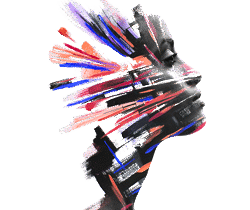In today’s fast-paced world, owning a dishwasher machine is no longer a luxury—it’s a time-saving, energy-efficient necessity. Yet, many people don’t fully understand how to use it properly. Whether you’re a new owner or someone who’s been using one for years, learning the right way to operate, maintain, and maximize your dishwasher machine can make a huge difference in results.
Using a dishwasher machine might seem straightforward—load it, add detergent, and hit start, right?
Not quite.
While many homeowners believe they’re using their dishwasher correctly, studies show that more than 60% of users make common mistakes that lead to
- Poorly cleaned dishes
- Broken glassware
- Water spots
- Clogged filters
- Reduced lifespan of the appliance
Whether you’re a first-time dishwasher owner or someone wanting cleaner, shinier results, this detailed guide will walk you through how to use the dishwasher machine the proper way—from pre-loading to post-wash maintenance.

Table of Contents
Toggle1. Why Use a Dishwasher Machine?
Dishwashers offer far more than convenience. If used properly, they can:
- Save over 7,000 gallons of water per year compared to handwashing
- Kill more bacteria and germs than handwashing ever could
- Reduce energy usage and utility costs
- Protect delicate dishes from breakage caused by manual scrubbing
- Save hours of your time every week
But all of this depends on using the machine properly.
2. Preparing Your Dishes
Before even opening the dishwasher door, you need to prepare your dishes for loading.
Scrape—Don’t Rinse
Yes, you read that right. You don’t need to rinse your dishes before placing them in the dishwasher. Most modern machines are built to handle light food residue.
Do this instead:
- Use a rubber scraper or spatula to remove chunks of food.
- Quickly rinse anything with dried sauces or sugar that may harden during the wash.
- Avoid putting in heavily burned or sticky food particles—these can clog the filter.
🛒 Recommended Tool: OXO Good Grips Scraper—perfect for removing food before placing items into the dishwasher.
3. Loading the Dishwasher Machine
How you load your dishwasher directly impacts how well it cleans. Follow these steps carefully:
Load the Bottom Rack
The bottom rack handles the heavier and dirtier items.
- Plates go vertically, facing the center.
- Bowls at an angle to allow water flow.
- Pots and pans should be upside down.
- Leave space between items to prevent blocking jets.
Tips:
- Place items facing inward.
- Avoid blocking the rotating spray arms.
- Load items with space between them—water needs room to circulate.
- Pro Tip: Always double-check that no tall dishes are preventing the upper spray arm from spinning.
Load the Top Rack
The top rack is for lighter items and fragile glassware.
- Glasses and mugs go upside down.
- Use rack tines to secure wine glasses.
- Lay small plastic containers on their side or in a secure holder.
Tips:
- Place items upside down so they don’t fill with water.
- Don’t stack items—it limits water reach.
- Angle glasses slightly to avoid water spots.
🛒 Helpful Accessory: Simple Houseware Top Rack Basket—Keeps lightweight items from flipping during the wash.
Loading Silverware and Utensils
Your silverware needs just as much attention as your dishes.
- Use the utensil basket or rack.
- Mix forks, knives, and spoons to prevent nesting.
- Place sharp items blade-down for safety.
- Put small utensils on the top rack if you have a 3rd-level rack.
🛒Amazon Bestseller: STORi Utensil Basket—Perfect upgrade or replacement for broken silverware holders.
Check the Filter
Dishwasher filters trap food debris. If clogged, they reduce performance and cause odors.
How to clean it:
- Remove the bottom rack.
- Twist out the filter (usually near the bottom spray arm).
Rinse under hot water and scrub if needed.

4. Adding the Right Dishwasher Detergent
Using the wrong detergent or incorrect amount is a major reason dishes come out dirty.
Types of Dishwasher Detergents:
- Pods/Tablets—Convenient and pre-measured.
- Powder—Budget-friendly, adjustable dosing.
- Gel—Good for delicate cycles but can leave residue if overused.
Always fill the main compartment—never put detergent in the pre-wash unless your machine has that feature.
NEVER use hand soap or liquid dish soap — it will overflow with bubbles and could damage your machine.
🛒 Top Detergent Picks:
Add Rinse Aid
Rinse aid helps eliminate water spots, especially on glassware.
🛒 Best Rinse Aid: Finish Jet-Dry Rinse Aid
5. Choosing the Right Wash Cycle
Selecting the right cycle affects water and energy use, cleaning quality, and run time.
Common Dishwasher Cycles:
- Normal: Standard dishes with average food residue
- Heavy: Pots, pans, and extra dirty dishes
- Quick/Express: Lightly soiled dishes, faster wash
- Eco Mode: Water and energy-saving, takes longer
- Sanitize: Uses high temperatures for hygiene
Pro Tip: Read your dishwasher’s manual—cycles vary by brand.
6. Starting the Dishwasher Machine
Once you’ve loaded the dishwasher and added detergent:
- Close the door firmly until it clicks.
- Select the appropriate wash cycle.
- Press the “Start” or “Start/Resume” button.
- If there’s a child lock, make sure it’s not activated.
🚫 Do not open the machine mid-cycle—hot steam can escape and interrupt cleaning.
Let the Cycle Finish Completely
Let the full wash + drying cycle complete before unloading.
Opening too early leaves water on dishes and may reduce sanitation.
Bonus Tip: After completion, leave the door slightly open for 5–10 minutes to release steam and enhance drying.
7. Unloading the Dishwasher (The Right Way)
Yes—there’s a right way to unload, and it prevents spots and wet dishes.
How to Do It:
- Wait 5–10 minutes after the cycle ends. Let the steam escape and allow dishes to cool slightly.
- Open the door to release excess moisture.
- Unload from the bottom rack first. This prevents water from dripping from the top rack.
🛒 Bonus Tip: Use a microfiber cloth to dry off items with tricky shapes like mugs or bowls.

8. Bonus: How to Maintain the Dishwasher Machine
To keep your dishwasher performing well for years, follow these monthly maintenance tips.
Clean the Filter Weekly
Most dishwashers have a removable filter near the bottom spray arm.
- Take it out
- Rinse under hot water
- Use a brush to scrub off grease or trapped food
🛒 Affresh Dishwasher Cleaner Tablets—Deep cleans your machine monthly and removes odor, grease, and mineral build-up.
Run a Monthly Cleaning Cycle
Even when your dishwasher looks clean, hidden parts can collect grease, limescale, and detergent residue.
- Use a dishwasher cleaner tablet
- Run an empty cycle on the hottest setting
🛒 Finish Dual Action Dishwasher Cleaner — One of the most trusted deep cleaners for dishwashers.
Inspect the Spray Arms
- Check for clogs in spray holes.
- Clean with a toothpick or pin if water jets are weak.
Clean the Door Seals
Use a damp cloth with vinegar or mild detergent to clean around the door seals — where mold and grime love to hide.
Top 10 Mistakes to Avoid When Using a Dishwasher Machine
- Using regular dish soap (flood alert!)
- Overloading the racks
- Putting wood, cast iron, or copper in the dishwasher
- Stacking plastic bowls (they flip!)
- Not checking for stuck utensils
- Letting food dry before loading
- Skipping rinse aid
- Ignoring your filter
- Washing sharp knives—it dulls them
- Unloading the top rack first
Final Thoughts: Master the Dishwasher Machine Like a Pro
Learning how to use the dishwasher machine the right way is a small investment in time with big rewards: sparkling clean dishes, lower utility bills, longer appliance life, and fewer headaches.
Whether you’re setting up your first kitchen or simply want better results, following these steps—and using the right accessories—ensures a consistently clean, efficient, and worry-free dishwashing experience.
Now that you’ve learned how to use the dishwasher machine correctly, you’re ready to enjoy:
- Sparkling clean dishes
- Fewer water spots
- Longer appliance lifespan
- Less time in front of the sink
Pair your knowledge with the right accessories and detergent, and your kitchen will thank you.
🛒 Ready to upgrade your dishwasher routine?
👉 Shop the Best-Rated Dishwasher Accessories on Amazon
Did you enjoy this guide?
✅ Save it for later.
✅ Share with a friend
✅ Subscribe to our newsletter for more kitchen tips and product recommendations!





















Nulla dapibus venenatis erat, eu accumsan nunc posuere ut. Praesent ullamcorper fringilla sem eget condimentum. Morbi sed dui nec est sodales elementum et sit amet ante.
Phasellus suscipit libero ac justo molestie condimentum. Morbi fermentum volutpat urna, et hendrerit justo accumsan vel. Ut id dolor augue.
Vestibulum pretium metus nec ante rhoncus convallis. Nulla lobortis lectus et velit tristique efficitur. Praesent non tempus sem. Nunc rhoncus tortor vitae viverra vulputate.